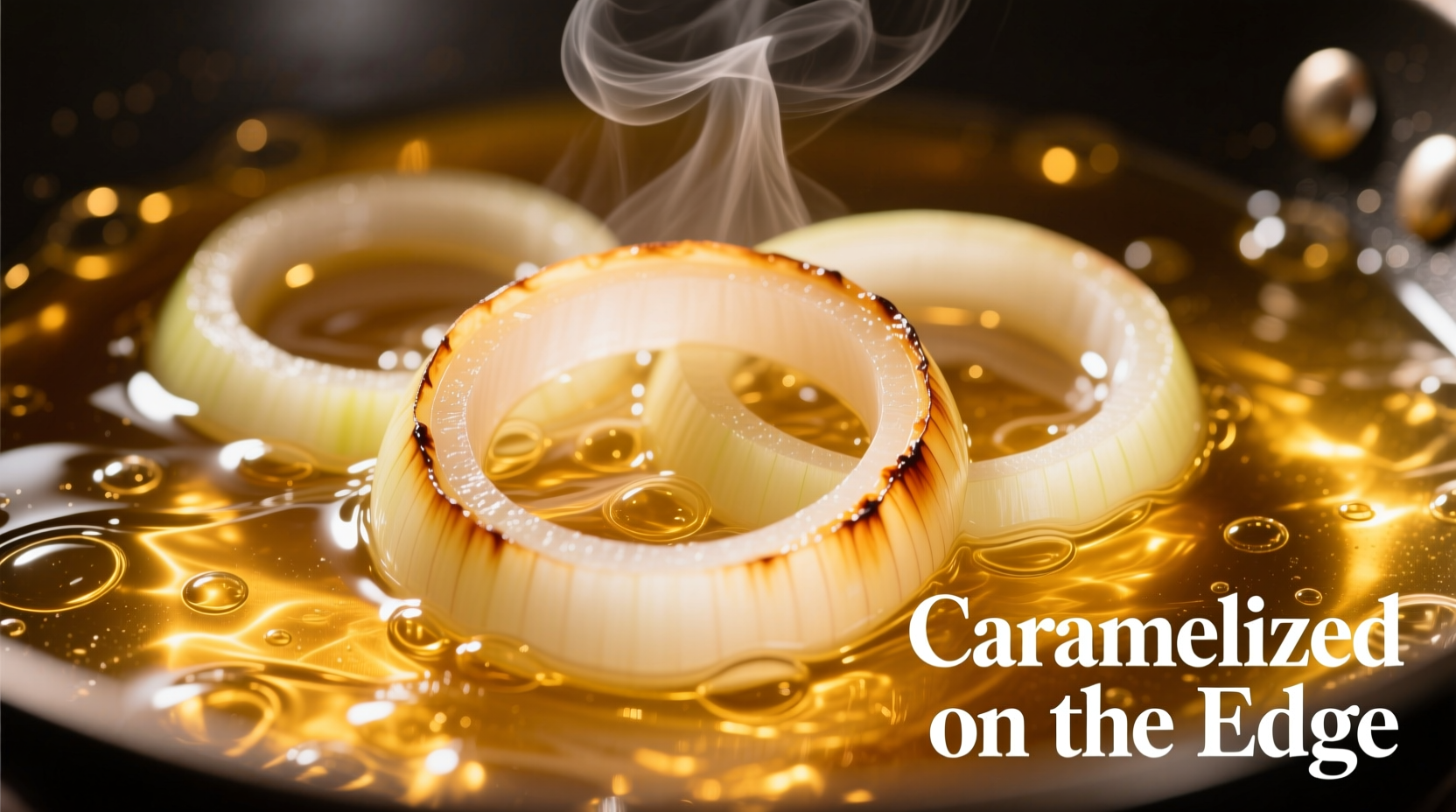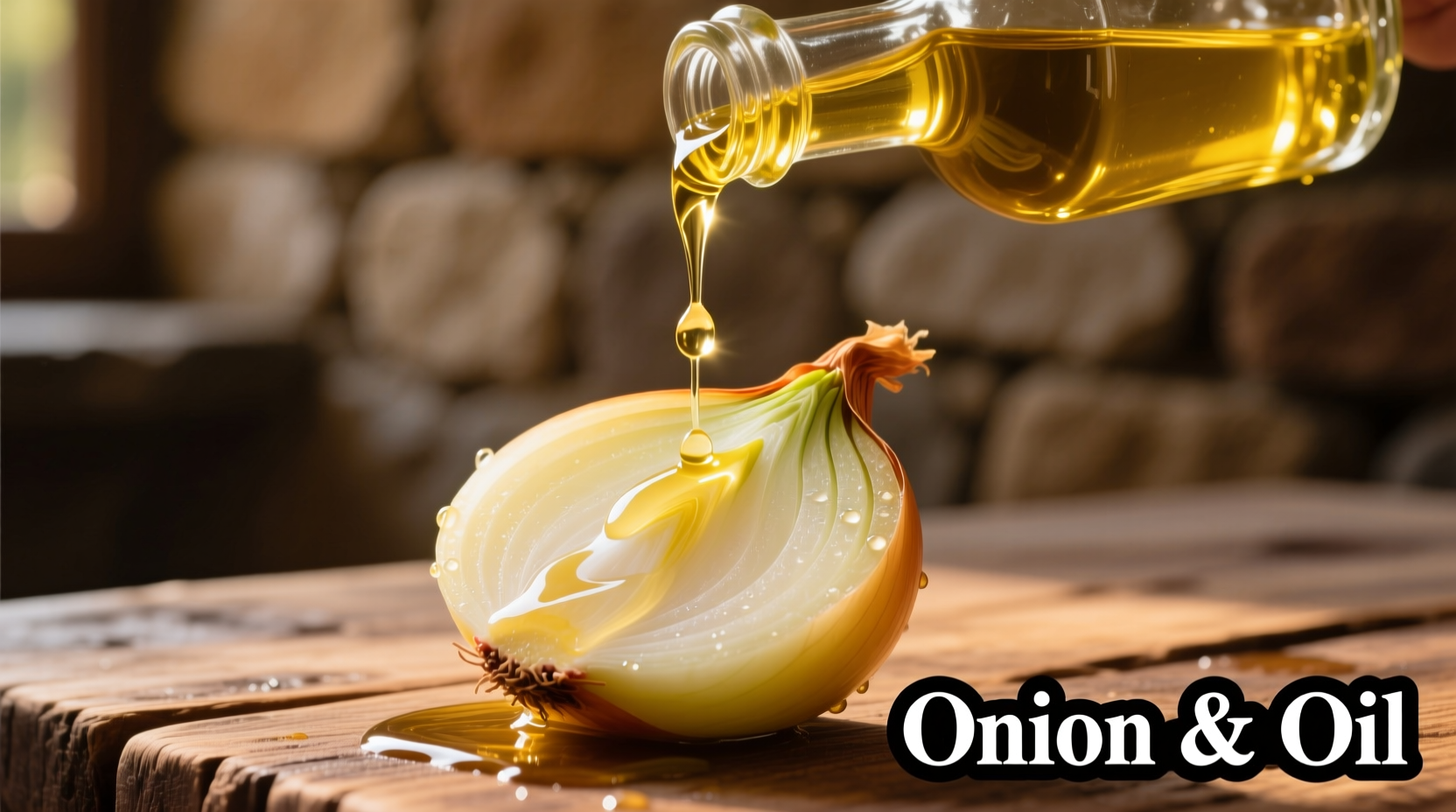Discover how to harness the full potential of onion and oil in your kitchen with this comprehensive guide. You'll learn professional techniques for creating flavorful infusions, understand the science behind flavor extraction, and gain practical knowledge to elevate everyday cooking. Whether you're making salad dressings, marinades, or finishing oils, these evidence-based methods deliver consistent, restaurant-quality results at home.
The Science of Flavor Extraction
Onions contain volatile sulfur compounds that dissolve readily in oil, creating complex flavor profiles impossible to achieve with water-based methods. When heated properly, these compounds transform through two key processes:
- Caramelization (140-160°C/285-320°F): Natural sugars break down into rich, sweet compounds
- Maillard reaction (140-165°C/285-325°F): Amino acids interact with sugars creating savory umami notes
Professional chefs like Antonio Rodriguez emphasize that "oil acts as both solvent and flavor carrier, extracting compounds that water cannot reach. The key is maintaining precise temperature control to avoid burning while maximizing flavor development."
| Oil Type | Smoke Point | Flavor Profile | Best For |
|---|---|---|---|
| Avocado oil | 271°C (520°F) | Neutral | High-heat infusion |
| Grapeseed oil | 216°C (420°F) | Light, clean | Delicate infusions |
| Extra virgin olive oil | 160-190°C (320-375°F) | Fruity, peppery | Low-temperature infusions |
Step-by-Step Infusion Methods
Follow this professional workflow for optimal results:
Preparation Phase
Begin with properly prepared onions. Thinly slice yellow onions (0.5-1mm thickness) using a mandoline for consistent results. The USDA Food Safety and Inspection Service recommends chilling onions for 30 minutes before cutting to reduce tearing and preserve volatile compounds (USDA FSIS, 2023).
Temperature-Controlled Infusion
Two proven methods deliver distinct results:
- Slow Infusion (Cold Method)
- Combine 1 cup thinly sliced onions with 2 cups oil
- Refrigerate for 24-48 hours
- Strain through cheesecloth
- Yields delicate, fresh onion flavor
- Controlled Heat Infusion
- Heat oil to 82°C (180°F) using thermometer
- Add onions, maintain temperature for 20-30 minutes
- Cool completely before straining
- Creates deeper, caramelized flavor profile

Safety Considerations and Shelf Life
The FDA warns that improperly prepared infused oils can create conditions for Clostridium botulinum growth, particularly with low-acid vegetables like onions (FDA Food Code, 2022). Follow these critical safety guidelines:
- Always refrigerate homemade onion oil
- Use within 7 days for safety
- Maintain pH below 4.6 when combining with acidic ingredients
- Never store at room temperature for extended periods
Practical Culinary Applications
Maximize your onion oil with these professional techniques:
Salad Dressings
Replace standard olive oil with onion-infused oil in vinaigrettes. The emulsification properties improve dressing stability while adding complex flavor. For a classic French vinaigrette, combine 3 parts onion oil with 1 part red wine vinegar, Dijon mustard, and shallots.
Marinades and Finishing
Use cooled onion oil as a finishing touch for:
- Pasta dishes (toss with 1-2 tsp per serving)
- Grilled vegetables (drizzle before serving)
- Soups (swirl in just before serving)
Troubleshooting Common Issues
Address these frequent problems with evidence-based solutions:
| Issue | Causes | Solutions |
|---|---|---|
| Bitter taste | Overheating, burnt onions | Maintain oil below 121°C (250°F), use thermometer |
| Cloudiness | Water content, impurities | Strain through double cheesecloth, use dry onions |
| Weak flavor | Insufficient contact time | Extend infusion to 48 hours, increase onion ratio |
Advanced Flavor Development
For professional results, consider these enhancement techniques:
- Layered Infusion: Add aromatics in sequence (garlic first, then onions) to maximize flavor extraction
- Acid Balance: Finish with lemon zest or vinegar to brighten rich oil infusions
- Texture Contrast: Reserve some fried onion bits for garnish while infusing the rest
Remember that different onion varieties produce distinct results. Yellow onions offer balanced sweetness, red onions provide brighter acidity, while sweet onions like Vidalia create milder infusions ideal for delicate dishes.
Conclusion
Mastering onion and oil techniques unlocks new dimensions in home cooking. By understanding the science behind flavor extraction and following evidence-based safety practices, you can create professional-quality infusions that elevate everyday dishes. The key lies in precise temperature control, proper preparation, and understanding how different oil bases interact with onion compounds.











 浙公网安备
33010002000092号
浙公网安备
33010002000092号 浙B2-20120091-4
浙B2-20120091-4